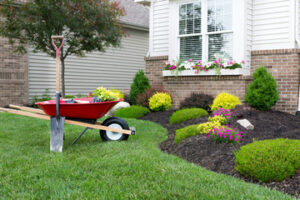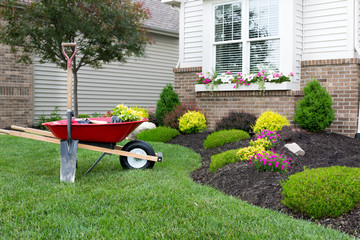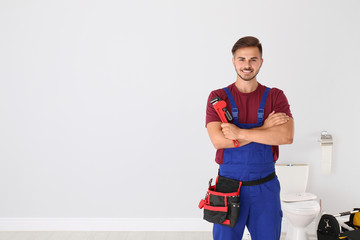A well-designed landscape not only increases your home’s value, it also makes for functional outdoor areas. It can prevent soil erosion, make the most of natural features like hills and valleys, and protect your family from stinging plants and allergens.
The element of color is important for creating a cohesive look in your garden. Combine warm and cool colors for contrast or use the same color throughout for a unified appearance. Visit https://www.primecutlawnky.com/ to learn more.
 Incorporating eco-friendly practices in landscaping creates a healthier outdoor environment. By prioritizing soil health, sustainable landscapes reduce the need for synthetic fertilizers and support a thriving ecosystem. In addition, utilizing low-water plants and installing irrigation systems to minimize water waste helps conserve vital resources.
Incorporating eco-friendly practices in landscaping creates a healthier outdoor environment. By prioritizing soil health, sustainable landscapes reduce the need for synthetic fertilizers and support a thriving ecosystem. In addition, utilizing low-water plants and installing irrigation systems to minimize water waste helps conserve vital resources.
Another important aspect of sustainable landscaping is limiting the use of non-recyclable materials in hardscapes. By utilizing recycled concrete, bricks and stones for patio surfaces and walkways, you can help lessen the environmental impact of these costly items. Additionally, using reclaimed wood for raised garden beds and fences is an environmentally responsible choice, as it reduces the need for newly-produced lumber.
Lastly, sustainable landscapes utilize indigenous or native plant species that are adapted to the local climate and soil conditions. Using locally-grown plants also cuts down on the transport costs of the landscape, further reducing the carbon footprint of your yard. By planting trees, shrubs and flowers that produce seeds, berries or nectar, you encourage wildlife to live in your yard, which reduces the need for insecticides.
Keeping your property eco-friendly requires a lot of planning and effort, but it can be done in small steps. Start by identifying what activities will take place in your yard, and determine how much time you are willing to dedicate to maintaining it. This will help you create a realistic timeline and budget.
Next, prioritize water efficiency by implementing drip irrigation and rainwater harvesting. Grouping plants with similar water needs together and watering in the early morning to minimize evaporation are additional ways you can reduce your water consumption.
Energy-efficient landscaping can significantly reduce utility costs throughout the year. Trees and bushes can shade your home during the summer, cutting down on air conditioning costs, while windbreaks block cold winter winds, helping to lower heating bills.
A well-planned sustainable landscape is a beautiful, functional outdoor space that works in harmony with the natural environment and requires minimal maintenance. Choosing the right plants, incorporating efficient irrigation and drainage systems, and avoiding high-maintenance features are all essential to making your landscape eco-friendly. Achieving a healthy and vibrant environment starts in your own backyard, so get started today!
Relaxing
As you probably know, spending time outdoors has many health benefits – it can lower your blood pressure and just looking at plants has been proven to reduce stress. It’s also been shown that walking through green environments or even just living near parks and community green spaces can improve mood, attention, and memory. So, why not create a relaxing oasis right outside your home? Landscaping ideas like a pergola or a quiet garden spot can be the perfect place to sit back, read a book, and enjoy your backyard. A relaxing retreat right outside your door can be just as nice as a vacation without the hassle of packing.
You can also add water features and cozy seating areas to make the space truly personal.
Attractive
When a home or business has attractive landscaping, it increases the curb appeal. This gives the impression that the owners care for the property and take pride in it. It also makes it easier to find the entrance and provides a welcoming feeling. People are naturally drawn to green grass, tantalizing flowers, frolicking animals, and the beauty of nature. Spending time outdoors reduces stress, improves health and mood, and boosts the immune system. Landscaping is the best way to incorporate all of these elements into your outdoor space.
When designing a landscape, you need to strike a balance between the house and the natural environment. If too much emphasis is placed on the house, it can become overbearing and unattractive. Alternatively, if the landscape is too natural, it can appear to be abandoned and neglected. A skilled landscaper will create a design that will draw the eye to your home while incorporating the natural elements of the property into the overall design.
Professional Landscaping is a huge part of a home or business’s overall value. A beautifully designed yard can increase the value of a home by up to 10%. In addition, it can add value to a business by making it more appealing to customers or tenants.
Landscaping is often thought of as mowing the lawn or planting flowers, but it goes far beyond that. The art of landscaping consists of both hardscaping and softscaping, or the use of materials like stones, wood, water, plants, and shrubs. Hardscaping includes any structure incorporated into the landscape, such as patios or walkways. Softscaping refers to all living items, such as trees, bushes, and grass.
The use of plants and trees in the design of a landscape is important because it creates color, texture, movement, and depth. Water features such as ponds and waterfalls add visual interest and can create soothing sounds. Other elements, such as fountains and statues, can also add to the beauty of a garden. Proper pruning is another important element in a beautiful landscape. It can shape and define plants, prevent overgrowth, and make the entire area look more aesthetically pleasing.
Low Maintenance
A well-designed landscape can be low maintenance, reducing the time spent mowing and weeding. The use of hardscaping can also help make a yard easier to care for. In addition, choosing plants that thrive in your climate and planting them properly can cut down on water consumption, fertilizer usage, and upkeep.
When choosing trees, opt for native species that are adapted to the area. These can tolerate drought, hot temperatures, and cold weather, allowing you to spend less time caring for them. When incorporating shrubs into your garden, consider low maintenance options like boxwood, juniper, or yew, which require minimal pruning and can be used to create low fences and hedges.
To reduce maintenance, choose plants that are native to California. These have evolved to thrive in our unique climate, so they don’t need as much water or fertilizer as non-native flora. To further minimize water consumption, plant your flora in areas that receive full sun. Using mulch to retain moisture and prevent evaporation is also an effective way to save on irrigating costs.
Incorporating low maintenance plants into your landscape can also reduce the number of pests and weeds you’ll need to deal with. This can save you both money and effort in the long run, making your backyard a comfortable and inviting place to relax.
Some landscapes require more attention to maintain their beauty, and this is especially true for larger gardens with elaborate design features. When possible, group plants by their care needs and plant those that require more maintenance closer to the house. This can give you easy access to a lush garden, while freeing up your time for other activities.
Spending time in green spaces has been proven to reduce stress and improve mental health. With these benefits, it’s no wonder why so many people are choosing to invest in their landscaping. Landscaping can transform any outdoor space into a relaxing and welcoming retreat, while adding value to your home. From choosing the right plants to implementing a backyard hot tub, there are a variety of ways to increase your property’s curb appeal and comfort.



